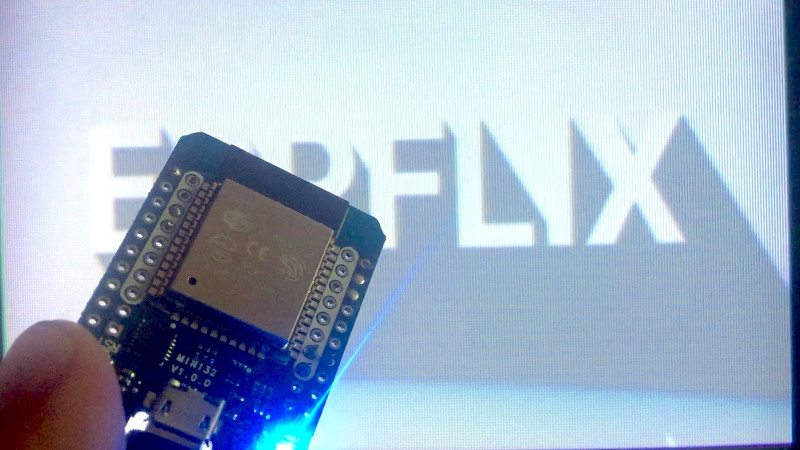These days, if you’ve got a TV that’s a little too old to directly access streaming services, you’ve got plenty of options. Apple TV, Chromecast, and a cavalcade of Android boxes are available to help get content on your screen. However, if you’re really stuck in the past, ESPFLIX might just be for you.

Yes, that’s right – it’s an online streaming service running on an ESP32. [rossumur] has achieved this feat through a careful use of codecs, and some efficient coding strategies to make it all come together. Video is MPEG1, at just 352×192 resolution. Audio is via the SBC codec, originally intended for use with Bluetooth devices. It’s chosen here for its tiny sample buffers, making it easier to decode in the limited RAM of the ESP32. Output is via composite video, generated on the ESP32 itself.
The titles themselves consist of public domain content, running off an Amazon Web Services instance. With limited RAM on the ESP32, there’s not much buffering to be had, so [rossumur] is bankrolling an AWS Cloudfront instance which should make it possible to use ESPFLIX from most places around the world with a solid internet connection.
We’ve seen [rossumur]’s work before, with the ESP_8_BIT serving as a prelude to this project’s capabilities. Video after the break.
















Looks more responsive than anyrhing amazon or google has to offer… better add some more telemry/tracking and other bloat “features”.
Very nice. impressive from a simple wifi device. ,
…and AliExpress selling $10 ESP32-based “chromecast” and “Apple TV” devices in 3… 2…
But seriously, unbelievable. Utterly amazed that’s possible. Good work.
An alternative would be using an 8bit tft lcd 320×240 (16:9 using 320×180), this reduces the need for an extra frame buffer, and should leave enough ram for mp1/mp2 decoding and/or p frame decoding.
Maybe, if fast enough, using ps-ram for stream buffer (raw mpeg) would also free up some conventional ram?
Another epic rossumur project.
Amazing what people cram into a microcontroller these days. Really epic effort and it’s surprisingly fast for what it is.
The photo with the Apple remote:
I see a ghoulish “Intel”.
B^)
If this gets popular, I can see Cease and Desist lawsuits from both ESPN and Netflix for “trademark violations”.
Nothing here is close enough to either logo to really convince a judge rule it a trademark violation. It’s not Netflix with just a different color or ESPN with a different font, it’s a unique word. That’s all that matters.
Netflix changed fonts ~2014 and it is now a 2d font with curved bottom(no “drop shadow”), and since I haven’t seen any suit against Espressif by ESPN, for making ESP8266/ESP32 I don’t see them bothering with a low res video stream player… (until maybe it starts playing old MLB/NFL/NHL footage from ESPN’s servers for free).